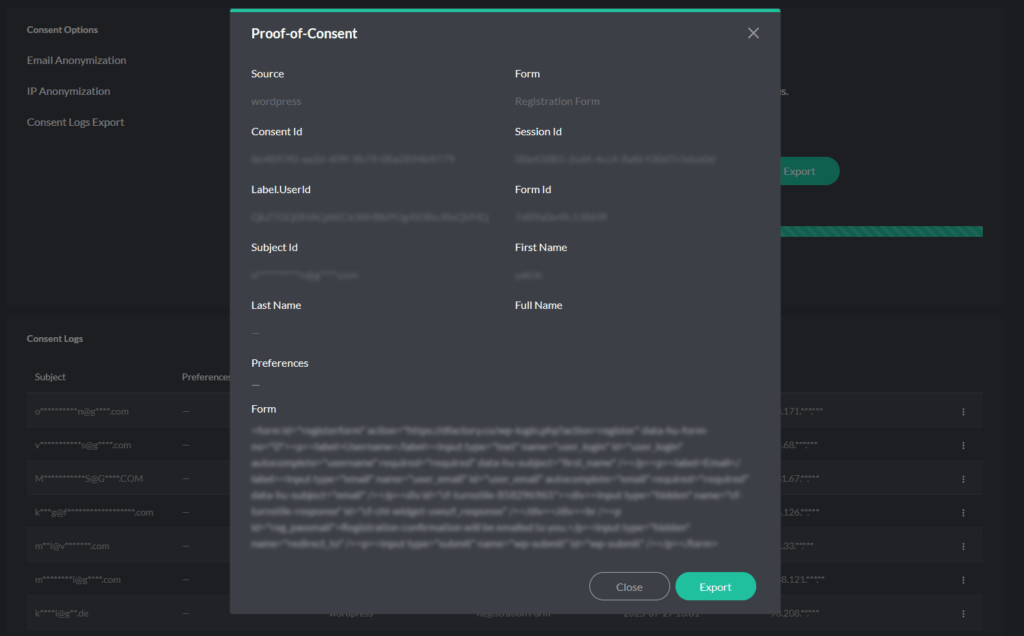Proof-of-Consent
A Privacy Proof-of-Consent documents that a visitor submitted a form (e.g., registration, contact, policy acknowledgment) that included your privacy consent text/checkboxes. When the configured form is submitted, the banner captures a snapshot of what was shown and sends a Privacy Consent entry to the application. The export includes:
- the property/app ID, internal user hash, session ID, and a unique consent_id,
- masked identifiers (IP, optional email/subject if collected),
- the form_id that produced the entry,
- any checked_preferences (when your form defines multiple consent checkboxes), and
- a proof field containing the HTML snapshot of the rendered form content.
Why this matters: the proof gives you the exact text and structure presented at submission time, tied to stable IDs (consent_id , form_id , session_id ) so you can reference it in audits, DSR workflows, or vendor reviews—while anonymization keeps identifiers protected in shared artifacts.

Generating a Proof-of-Consent
In the application, open Consent Logs and switch to Privacy Consent. Select the relevant entry and choose Proof of Privacy Consent to create a human-readable report or CSV export. The proof respects the anonymization setting configured in the logs view.
Proof-of-Consent export contents
A Privacy Proof-of-Consent export includes:
- app_id — property/app identifier.
- user_id — internal, hashed user reference for the proof.
- form_id — configuration ID of the privacy form/notice that produced the record.
- session_id — browser session identifier at submission time.
- consent_id — unique identifier for this consent record (primary key for correlation).
- ip_address — masked when anonymization is enabled.
- subject_id — masked subject identifier if collected (e.g., email).
- full_name — present only when the form collects it.
- checked_preferences — selections within the privacy form when multiple checkboxes exist.
- proof — HTML snapshot of the rendered form content at submission time.
What you use it for
- Audit evidence: show the exact notice text/form the visitor accepted, with timestamp and IDs.
- DSR/complaints: retrieve the precise record and the HTML proof for the individual in question.
- Vendor/legal reviews: provide a redacted (anonymized) CSV that includes the proof markup without exposing raw identifiers.
